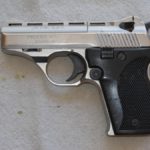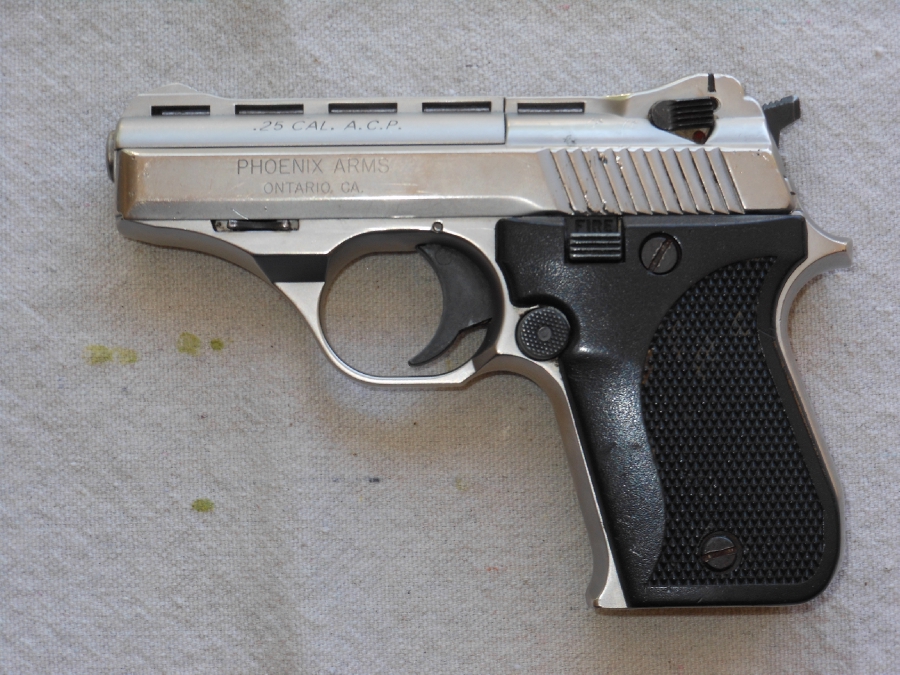We were dispatched to a report of a possible suicide attempt around 4 PM in a trailer park. It was about a 30 minute code-3 run to get there. This was in a large rural coastal county and the sheriffs office was responsible for coverage. Enroute we got additional information that our 20 year old patient was believed to have suffered a gunshot wound to the head. My partner (EMT-Intermediate) and I (paramedic) were thinking a couple of things. First off, we expected the patient to be dead when we got there. Second we fully expected a deputy to be on scene long before us.
We got on scene and there was a large gathering of people around outside a small pick-up camper. As we got out of the ambulance and started taking in the scene a very large young man, his shirt covered in blood emerged from the camper. He was obviously emotionally charged, screaming and crying that his girlfriend had shot herself inside the camper. My partner fortunately was about twice my size so I asked him to keep that guy out of the camper and I went in to assess the patient. No deputy to be seen.
The patient was on a couch/bed in the front of the camper, unconscious, jaw clenched, snoring respirations at a rate of about 6-10 breaths per minute. One side of her head was matted in fresh blood and I could only find an entrance wound from what looked like a small caliber weapon. The rest of the exam was unremarkable. About that time my partner came in looking for me, said a deputy had showed up and was dealing with the boyfriend. I filled my partner in and we were getting set to move her when we noticed a small caliber pistol previously obscured by a blanket.  My partner set it up on a shelf to get it our of our way and keep it out of plain view. We advised the deputy what we did as we loaded up the patient and headed back to the hospital.
My partner set it up on a shelf to get it our of our way and keep it out of plain view. We advised the deputy what we did as we loaded up the patient and headed back to the hospital.
This was pre-paralytic days so I nasally intubated the patient, started a line, took over breathing for her and contacted the hospital recommending air transport from our Level 3 trauma facility up to a Level 1 trauma facility in Portland. This was not a patient to keep at a level 3. The patient’s condition did not change during the 30 minute run back to the hospital. As we pulled into the ambulance bay I was surprised when the back door opened, the trauma team surgeon popped their head in and said due to weather the helicopter could not get in. He asked for a quick update, tossed me a couple of meds to piggy back into my line and shut the doors. About 90 minutes later we pulled into the ambulance bay at the level 1 facility still with no significant change in the patient’s condition.
We headed back to our station on the coast and I didn’t really even think about the patient as I assumed the outcome would not be good. About a week later our local trauma surgeon said he had something to show me. It was a film of our patient’s skull. All the tiny fracture lines looked like spider webs. When the .25 caliber bullet entered it fracture bone everywhere. This basically allowed the brain tissue room to expand from swelling and not impact circulation. About six months later the patient was back living in the community with minimal deficit from the injury. I worked a number of gunshot patients over the years and most did not turn out so well. Next post will be about an odd outcome of marriage resulting from my gunshot patient.
Lesson to Learn
Scene safety is important but sometimes you just find yourself in a spot. Keep your head, rely on your training and do what you need to do. Get in and get out. You never know when your patient’s life may depend on your actions. I’d like to hear your stories of unknowingly entering an unsafe scene and how that might have influenced your patient outcome.




Hi Jan,
EMS frequently finds itself in a challenging role. Most of us have knocked on a door and have been greeted with the barrel of a shotgun – it’s certainly something that makes you think twice. Sometimes situations are stable enough where you can make the call to go in, sometimes it’s better to back off (shotgun) or stay away all together.
EMTs, depending on the geopolitical situation, can also face some organizational challenges to ensuring a safe situation. A number of years ago I was first to arrive (fire department first response) to a personal injury call. A large angry dog was chained in the front yard prohibiting entry. I radioed for law enforcement assistance and stayed in my vehicle on the road. Subsequent arriving responders also agreed with the danger and stayed back. When law enforcement arrived, they managed the dog while we made entry into the house and addressed the patient. Following the call I was promptly and publicly dressed down by the fire chief, who claimed that only he, as incident commander, had the authority to call in outside resources. I took his rant without saying a word and returned home to file my disagreement in writing. Along with mentioning his poor leadership practice of a public counseling, I cited state EMS policy and ICS guidelines regarding who was in charge of that scene and who was responsible for responder safety. He clearly didn’t like it, but offered an apology and admitted that he was wrong.
TR
It’s odd how people who think they know ICS are sometimes one of the greatest violators of the process. I admit you handled it more graciously than I would have.
As a general rule of thumb scenes are reasonably safe in these parts, and LAW does a great job of taking care of us.
As the big guy, it’s not uncommon to hear my partner say: “Ok, you are going in first.” =)
Jan, had a somewhat similar case to yours as BLS with a self-inflicted gunshot wound at about a 15-20 minute response, with PD right in front of us. On arrival, the officer confirmed with a family member that the gunshot was self-inflicted and stayed in the living room while we entered the bedroom where the patient was unconscious on the bed. The revolver was still in his hand which was outstretched to the side of the bed. My partner began working the patient from the side of the bed the hand with the gun was in, and I asked him to move and the officer to come into the room immediately to secure the weapon. Partner had focused on the patient, and not scene safety. PD assumed all was ok, but when taking a quick moment to secure the weapon, we secured the scene. Aware of other cases where patients that EMS crews thought were cleared of weapons – additional small concealed pistols were found on arrival at the ED
Thanks for the story Greg. Speaking of concealed weapons I had a motorcyclist wipe out once and as I was doing my head to toe in the back of the ambulance he said “I have a gun”. I asked if he wanted out and he laughed and said , “no I just wanted you to know”.
Years ago I was riding as the OIC of an engine and we were dispatched to a domestic fight and the EMS unit was coming from the 2nd due. We were told by the dispatcher that the injured party was at one address and the person who attacked him was at another address. The houses were several blocks apart, so we went directly to the 1st address. The problem was the dispatcher gave us the attackers address instead of the victims.
When we arrived I knocked on the front door and a man under the influence answered the door with his hand behind his back. I asked if he needed an ambulance and he brought his hand around with a bloody meat cleaver held high.
We all were backing down the stairs and he followed us to the front yard. At the same time the PD arrived and saw the situation. Next thing I knew the police officer had his service revolver out and we were in the middle of both. Now I’ve got a meat cleaver and a gun pointed in our direction. It took only a minute for the officer to take control of the situation, but it seemed like forever.
Months later, I ended up testifying against the suspect in court. He got off on a technicality. Our department covers 500 square miles with a population of over one million. What are the chances of me running into this person, but one day I was standing in a bank line and the guy is standing right behind me.
I’m guessing you were having one of those shifts Larry. It is awkward when you run into a previous patient. I worked primarily small or rural areas so not uncommon.